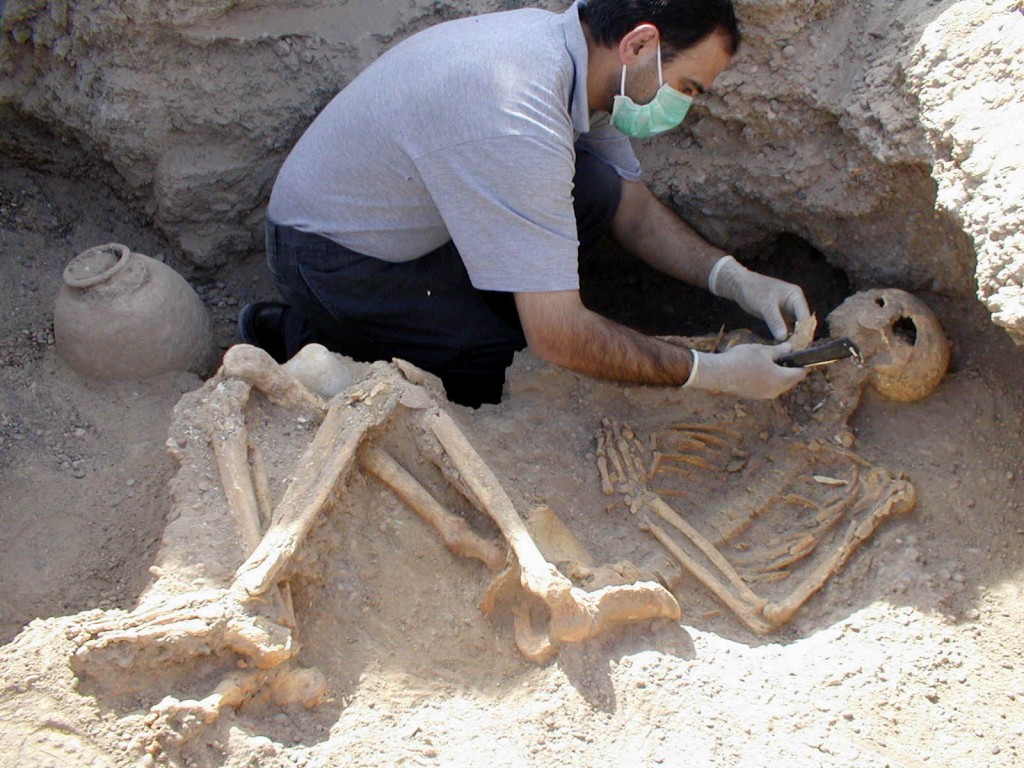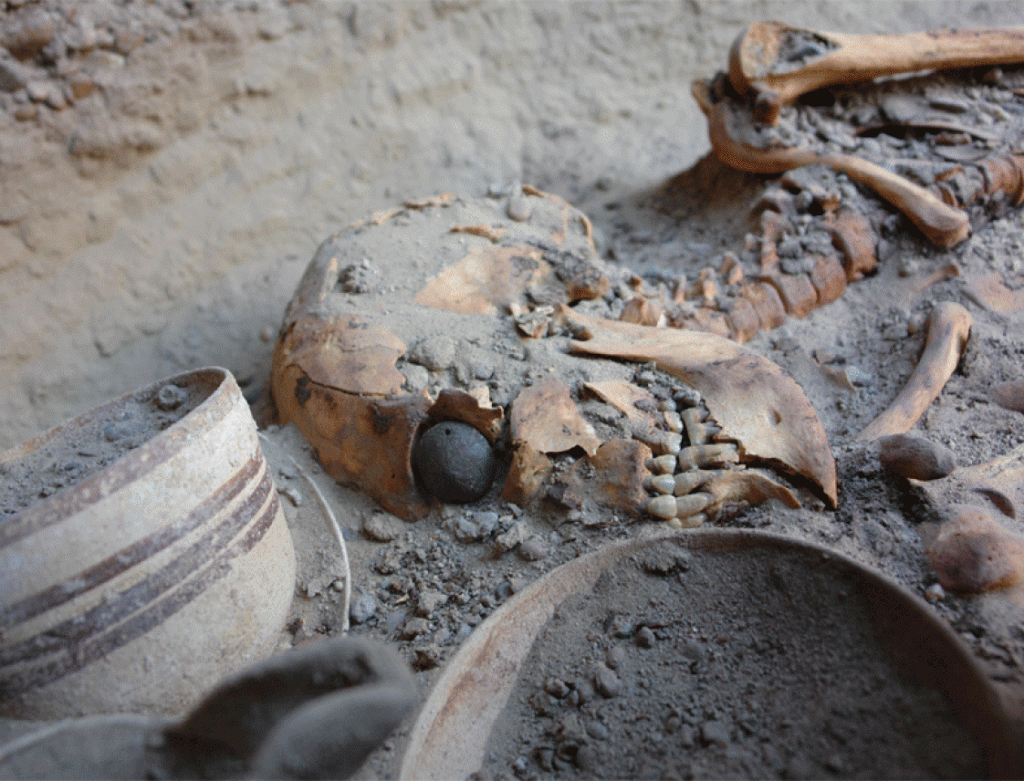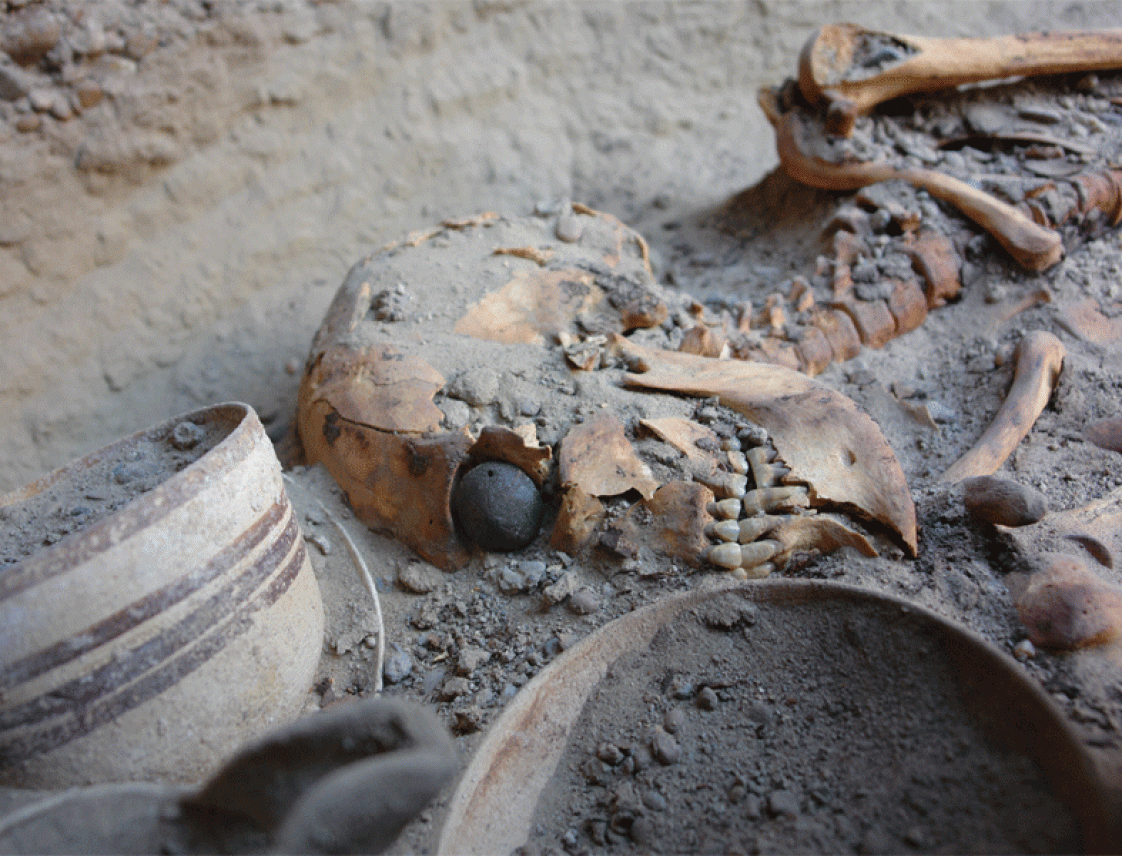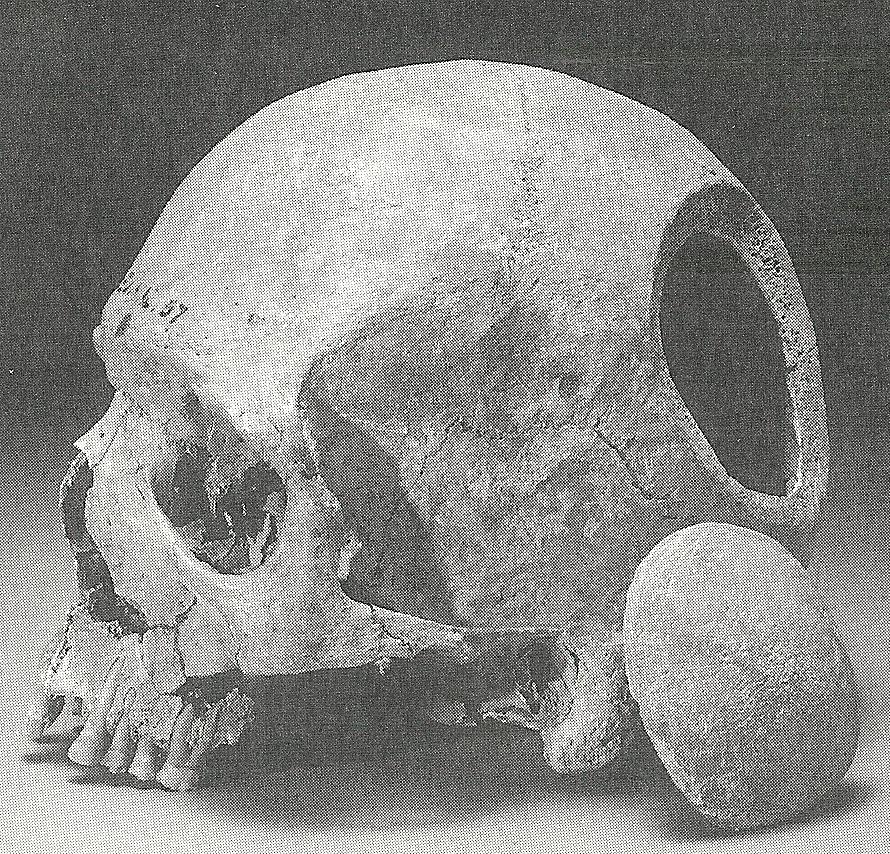The report below was made by Dr. Maziar Ashrafian Bonab and posted in the CAIS website in London hosted by Shapour Suren-Pahlav.
Kindly note the excepting one photo, all other pictures are Kaveh Farrokh’s lectures at the University of British Columbia, notably lectures delivered in 2014.
============================================
In 2000, a rather full skull with forehead and parietal bones was found during the archeological excavations in the historical cemetery of Chal-e Shahin in Kohgilooye and Boyer Ahmad Province.
 Examination of a skeleton in one of the excavations in Shahr-e Sookhteh (lit. Burnt City) (Source: CAIS).
Examination of a skeleton in one of the excavations in Shahr-e Sookhteh (lit. Burnt City) (Source: CAIS).
In a primary probe of the finding, two discoid holes with some 0.7cm diameter, on parietal bones were found on the margins of which no trace or recovered bony tissues could be seen. Such sings are usually created shortly before death showing a kind of operation on the skull, which is called trepanation. This sort of operation used to be carried out in the ancient times in order to save the patients from physical and mental disorders.
In many primitive societies, magicians did take such a measure to let the poisonous vapor as well as satanic souls, known as the cause of illness, out the head of the patients with nervous and mental disorders or paranoia. They took a part of skull out or made a hole in it. Reports show that trepanation had been performed in different parts of the world especially in Central and Latin America.
 Skeleton of a young woman from Shahr-e Sookhteh (lit. Burnt City) From University of British Columbia Course-Summer 2014: “Ancient Inventions that Changed the World“). Note artificial eye in the eye socket of the skull; for more, see here…
Skeleton of a young woman from Shahr-e Sookhteh (lit. Burnt City) From University of British Columbia Course-Summer 2014: “Ancient Inventions that Changed the World“). Note artificial eye in the eye socket of the skull; for more, see here…
Some unique samples of such skulls are now being kept at a number of museums and centers such as London University Archeological Institute and Medical Center of Kansas University.
In addition, some instances have been reported from other parts of the world including Europe, but rare in Asia and Middle East. However, the 4850- year-old trepanation sample discovered in Shahr-e Sukhteh (burnt city), Sistan va Baloochestan Province is one of the very ancient trepanation in the world and the second one in Iran belonging to a 13-year-old girl with chronic hydrocephalus.
Trepanation in Ancient Britain: The Critchel Down skull bearing evidence of surgery (From University of British Columbia Course-Summer 2014: “Ancient Inventions that Changed the World“). The circle of bone had been removed with sharp stone tools. The patient survived; when he died in old age, he was buried with the circle of bone that had been removed…perhaps he had kept this for religious or “Good Luck” reasons.
In anthropometric and pathology examinations, it was found out that this sample dates back to the first millennium BCE. This finding will be presented at the National Museum of Medical Sciences History.





